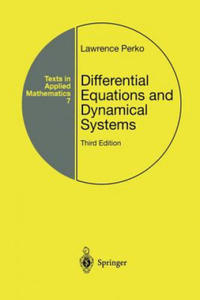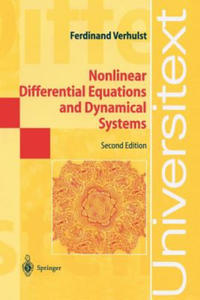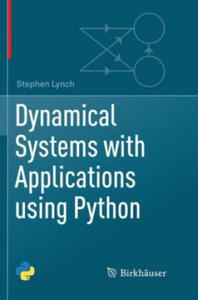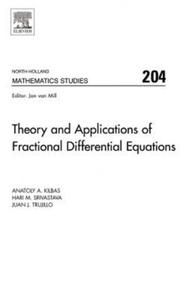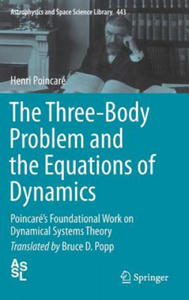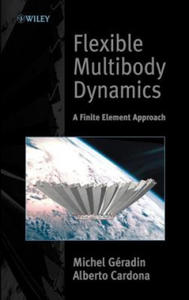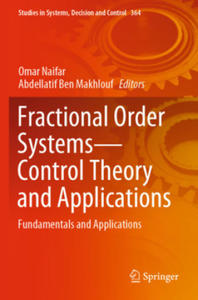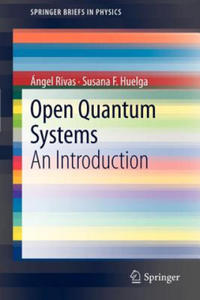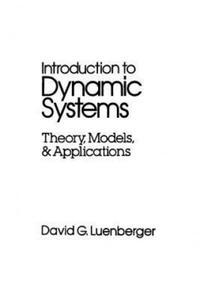libristo differential equations a dynamical systems approach 6795012
- znaleziono 42 produkty w 2 sklepach
Differential Equations and Dynamical Systems Springer-Verlag New York Inc.
Książki / Literatura obcojęzyczna
This textbook, ideal for students and lecturers alike, is a systematic study of the qualitative and geometric theory of nonlinear differential equations and dynamical systems. It includes a thorough treatment of linear systems.§
Sklep: Libristo.pl
Nonlinear Differential Equations and Dynamical Systems Springer-Verlag Berlin and Heidelberg GmbH & Co....
Książki / Literatura obcojęzyczna
This book bridges the gap between elementary courses and the research literature. The basic concepts necessary to study differential equations - critical points and equilibrium, periodic solutions, invariant sets and invariant manifolds - are discussed.§Stability theory is developed starting with linearisation methods going back to Lyapunov and Poincar. The global direct method is then discussed. To obtain more quantitative information the Poincar -Lindstedt method is introduced to approximate periodic solutions while at the same time proving existence by the implicit function theorem. The method of averaging is introduced as a general approximation-normalisation method.§The last four chapters introduce the relaxation oscillations, bifurcation theory, centre manifolds, chaos in mappings and differential equations, Hamiltonian systems (recurrence, invariant tori, periodic solutions).
Sklep: Libristo.pl
Dynamical Systems with Applications using Python Springer Nature Switzerland AG
Książki / Literatura obcojęzyczna
This textbook provides a broad introduction to continuous and discrete dynamical systems. With its hands-on approach, the text leads the reader from basic theory to recently published research material in nonlinear ordinary differential equations, nonlinear optics, multifractals, neural networks, and binary oscillator computing. Dynamical Systems with Applications Using Python takes advantage of Python's extensive visualization, simulation, and algorithmic tools to study those topics in nonlinear dynamical systems through numerical algorithms and generated diagrams. After a tutorial introduction to Python, the first part of the book deals with continuous systems using differential equations, including both ordinary and delay differential equations. The second part of the book deals with discrete dynamical systems and progresses to the study of both continuous and discrete systems in contexts like chaos control and synchronization, neural networks, and binary oscillator computing. These later sections are useful reference material for undergraduate student projects. The book is rounded off with example coursework to challenge students' programming abilities and Python-based exam questions. This book will appeal to advanced undergraduate and graduate students, applied mathematicians, engineers, and researchers in a range of disciplines, such as biology, chemistry, computing, economics, and physics. Since it provides a survey of dynamical systems, a familiarity with linear algebra, real and complex analysis, calculus, and ordinary differential equations is necessary, and knowledge of a programming language like C or Java is beneficial but not essential.
Sklep: Libristo.pl
Dynamical Systems with Applications using MATLAB (R) Birkhauser
Książki / Literatura obcojęzyczna
This textbook, now in its second edition, provides a broad introduction to both continuous and discrete dynamical systems, the theory of which is motivated by examples from a wide range of disciplines. It emphasizes applications and simulation utilizing MATLAB
Sklep: Libristo.pl
Dynamical Systems with Applications using Python Birkhauser Verlag AG
Książki / Literatura obcojęzyczna
This textbook provides a broad introduction to both continuous and discrete dynamical systems, the theory of which is motivated by examples from a wide range of disciplines. It emphasizes applications and simulation utilizing Python. The hands-on approach of Dynamical Systems with Applications using Python has minimal prerequisites, only requiring familiarity with ordinary differential equations. It will appeal to advanced undergraduate and graduate students, applied mathematicians, engineers, and researchers in a broad range of disciplines such as population dynamics, biology, chemistry, computing, economics, nonlinear optics, neural networks, and physics.
Sklep: Libristo.pl
Introduction to Hamiltonian Dynamical Systems and the N-Body Problem Springer International Publishing AG
Książki / Literatura obcojęzyczna
This third edition text provides expanded material on the restricted three body problem and celestial mechanics. With each chapter containing new content, readers are provided with new material on reduction, orbifolds, and the regularization of the Kepler problem, all of which are provided with applications. The previous editions grew out of graduate level courses in mathematics, engineering, and physics given at several different universities. The courses took students who had some background in differential equations and lead them through a systematic grounding in the theory of Hamiltonian mechanics from a dynamical systems point of view.This text provides a mathematical structure of celestial mechanics ideal for beginners, and will be useful to graduate students and researchers alike. Reviews of the second edition:"The primary subject here is the basic theory of Hamiltonian differential equations studied from the perspective of differential dynamical systems. The N-body problem is used as the primary example of a Hamiltonian system, a touchstone for the theory as the authors develop it. This book is intended to support a first course at the graduate level for mathematics and engineering students. ... It is a well-organized and accessible introduction to the subject ... . This is an attractive book ... ." (William J. Satzer, The Mathematical Association of America, March, 2009) "The second edition of this text infuses new mathematical substance and relevance into an already modern classic ... and is sure to excite future generations of readers. ... This outstanding book can be used not only as an introductory course at the graduate level in mathematics, but also as course material for engineering graduate students. ... it is an elegant and invaluable reference for mathematicians and scientists with an interest in classical and celestial mechanics, astrodynamics, physics, biology, and related fields." (Marian Gidea, Mathematical Reviews, Issue 2010 d)
Sklep: Libristo.pl
Theory and Applications of Fractional Differential Equations Elsevier Science & Technology
Książki / Literatura obcojęzyczna
This monograph provides the most recent and up-to-date developments on fractional differential and fractional integro-differential equations involving many different potentially useful operators of fractional calculus. The subject of fractional calculus and its applications (that is, calculus of integrals and derivatives of any arbitrary real or complex order) has gained considerable popularity and importance during the past three decades or so, due mainly to its demonstrated applications in numerous seemingly diverse and widespread fields of science and engineering. Some of the areas of present-day applications of fractional models include Fluid Flow, Solute Transport or Dynamical Processes in Self-Similar and Porous Structures, Diffusive Transport akin to Diffusion, Material Viscoelastic Theory, Electromagnetic Theory, Dynamics of Earthquakes, Control Theory of Dynamical Systems, Optics and Signal Processing, Bio-Sciences, Economics, Geology, Astrophysics, Probability and Statistics, Chemical Physics, and so on.In the above-mentioned areas, there are phenomena with estrange kinetics which have a microscopic complex behaviour, and their macroscopic dynamics can not be characterized by classical derivative models. The fractional modelling is an emergent tool which use fractional differential equations including derivatives of fractional order, that is, we can speak about a derivative of order 1/3, or square root of 2, and so on. Some of such fractional models can have solutions which are non-differentiable but continuous functions, such as Weierstrass type functions. Such kinds of properties are, obviously, impossible for the ordinary models. What are the useful properties of these fractional operators which help in the modelling of so many anomalous processes? From the point of view of the authors and from known experimental results, most of the processes associated with complex systems have non-local dynamics involving long-memory in time, and the fractional integral and fractional derivative operators do have some of those characteristics.This book is written primarily for the graduate students and researchers in many different disciplines in the mathematical, physical, engineering and so many others sciences, who are interested not only in learning about the various mathematical tools and techniques used in the theory and widespread applications of fractional differential equations, but also in further investigations which emerge naturally from (or which are motivated substantially by) the physical situations modelled mathematically in the book. This monograph consists of a total of eight chapters and a very extensive bibliography. The main objective of it is to complement the contents of the other books dedicated to the study and the applications of fractional differential equations.The aim of the book is to present, in a systematic manner, results including the existence and uniqueness of solutions for the Cauchy type problems involving nonlinear ordinary fractional differential equations, explicit solutions of linear differential equations and of the corresponding initial-value problems through different methods, closed-form solutions of ordinary and partial differential equations, and a theory of the so-called sequential linear fractional differential equations including a generalization of the classical Frobenius method, and also to include an interesting set of applications of the developed theory. It is mainly application oriented and it contains a complete theory of Fractional Differential Equations. It can be used as a postgraduate-level textbook in many different disciplines within science and engineering and it contains an up-to-date bibliography. It provides problems and directions for further investigations. Fractional Modelling is an emergent tool with demonstrated applications in numerous seemingly diverse and widespread fields of science and engineering. It contains many examples.
Sklep: Libristo.pl
Three-Body Problem and the Equations of Dynamics Springer International Publishing AG
Książki / Literatura obcojęzyczna
This book is an accurate and readable translation of an article by Poincaré that is a foundational classic in the study of dynamical systems (popularly called chaos theory). In an effort to understand the stability of orbits in the solar system, Poincaré applied a Hamiltonian formulation to the equations of planetary motion and studied these differential equations in the limited case of three bodies to arrive at properties of the equations' solutions. It is the origin of Poincaré sections and the recurrence theorem, and discussions of orbital resonances and horseshoe orbits. Poincaré wrote for professional mathematicians and astronomers interested in celestial mechanics and differential equations. Contemporary historians of math or science and researchers in dynamical systems and planetary motion with an interest in the origin or history of their field will find this work interesting.
Sklep: Libristo.pl
Navier-Stokes Equations Springer International Publishing AG
Książki / Literatura obcojęzyczna
This volume is devoted to the study of the Navier-Stokes equations, providing a comprehensive reference for a range of applications: from advanced undergraduate students to engineers and professional mathematicians involved in research on fluid mechanics, dynamical systems, and mathematical modeling. Equipped with only a basic knowledge of calculus, functional analysis, and partial differential equations, the reader is introduced to the concept and applications of the Navier-Stokes equations through a series of fully self-contained chapters. Including lively illustrations that complement and elucidate the text, and a collection of exercises at the end of each chapter, this book is an indispensable, accessible, classroom-tested tool for teaching and understanding the Navier-Stokes equations. § Incompressible Navier-Stokes equations describe the dynamic motion (flow) of incompressible fluid, the unknowns being the velocity and pressure as functions of location (space) and time variables. A solution to these equations predicts the behavior of the fluid, assuming knowledge of its initial and boundary states. These equations are one of the most important models of mathematical physics: although they have been a subject of vivid research for more than 150 years, there are still many open problems due to the nature of nonlinearity present in the equations. The nonlinear convective term present in the equations leads to phenomena such as eddy flows and turbulence. In particular, the question of solution regularity for three-dimensional problem was appointed by Clay Institute as one of the Millennium Problems, the key problems in modern mathematics. The problem remains challenging and fascinating for mathematicians, and the applications of the Navier-Stokes equations range from aerodynamics (drag and lift forces), to the design of watercraft and hydroelectric power plants, to medical applications such as modeling the flow of blood in the circulatory system.
Sklep: Libristo.pl
Flexible Multibody Dynamics - A Finite Element Approach John Wiley & Sons Inc
Książki / Literatura obcojęzyczna
Flexible Multibody Dynamics comprehensively describes the numerical modelling of flexible multibody dynamics systems in space and aircraft structures, vehicles, and mechanical systems. A rigorous approach is followed to handle finite rotations in 3D, with a thorough discussion of the different alternatives for parametrization. Modelling of flexible bodies is treated following the Finite Element technique, a novel aspect in multibody systems simulation. Moreover, this book provides extensive coverage of the formulation of a general purpose software for flexible multibody dynamics analysis, based on an exhaustive treatment of large rotations and finite element modelling, and incorporating useful reference material. Features include different solution techniques such as: aeo time integration of differential--algebraic equations aeo non--linear substructuring aeo continuation methods aeo nonlinear bifurcation analysis.In essence, this is an ideal text for senior undergraduates, postgraduates and professionals in mechanical and aeronautical engineering, as well as mechanical design engineers and researchers, and engineers working in areas such as kinematics and dynamics of deployable structures, vehicle dynamics and mechanical design.
Sklep: Libristo.pl
Fractional Order Systems-Control Theory and Applications Springer, Berlin
Książki / Literatura obcojęzyczna
This book aims to bring together the latest innovative knowledge, analysis, and synthesis of fractional control problems of nonlinear systems as well as some related applications. Fractional order systems (FOS) are dynamical systems that can be modelled by a fractional differential equation carried with a non-integer derivative. In the last few decades, the growth of science and engineering systems has considerably stimulated the employment of fractional calculus in many subjects of control theory, for example, in stability, stabilization, controllability, observability, observer design, and fault estimation. The application of control theory in FOS is an important issue in many engineering applications. So, to accurately describe these systems, the fractional order differential equations have been introduced.
Sklep: Libristo.pl
Open Quantum Systems Springer-Verlag Berlin and Heidelberg GmbH & Co....
Książki / Literatura obcojęzyczna
In this volume the fundamental theory of open quantum systems is revised in the light of modern developments in the field. A unified approach to the quantum evolution of open systems is presented by merging concepts and methods traditionally employed by different communities, such as quantum optics, condensed matter, chemical physics and mathematical physics. §The mathematical structure and the general properties of the dynamical maps underlying open system dynamics are explained in detail. The microscopic derivation of dynamical equations, including both Markovian and non-Markovian evolutions, is also discussed. Because of the step-by-step explanations, this work is a useful reference to novices in this field. However, experienced researches can also benefit from the presentation of recent results.
Sklep: Libristo.pl
Introduction to Dynamic Systems - Theory Models and Applications John Wiley & Sons Inc
Książki / Literatura obcojęzyczna
Integrates the traditional approach to differential equations with the modern systems and control theoretic approach to dynamic systems, emphasizing theoretical principles and classic models in a wide variety of areas. Provides a particularly comprehensive theoretical development that includes chapters on positive dynamic systems and optimal control theory. Contains numerous problems.
Sklep: Libristo.pl
Variational Principles of Mechanics Dover Publications
Książki / Literatura obcojęzyczna
Introduction 1. The variational approach to mechanics 2. The procedure of Euler and Lagrange 3. Hamilton's procedure 4. The calculus of variations 5. Comparison between the vectorial and the variational treatments of mechanics 6. Mathematical evaluation of the variational principles 7. Philosophical evaluation of the variational approach to mechanics I. The Basic Concepts of Analytical Mechanics 1. The Principal viewpoints of analytical mechanics 2. Generalized coordinates 3. The configuration space 4. Mapping of the space on itself 5. Kinetic energy and Riemannian geometry 6. Holonomic and non-holonomic mechanical systems 7. Work function and generalized force 8. Scleronomic and rheonomic systems. The law of the conservation of energy II. The Calculus of Variations 1. The general nature of extremum problems 2. The stationary value of a function 3. The second variation 4. Stationary value versus extremum value 5. Auxiliary conditions. The Lagrangian lambda-method 6. Non-holonomic auxiliary conditions 7. The stationary value of a definite integral 8. The fundamental processes of the calculus of variations 9. The commutative properties of the delta-process 10. The stationary value of a definite integral treated by the calculus of variations 11. The Euler-Lagrange differential equations for n degrees of freedom 12. Variation with auxiliary conditions 13. Non-holonomic conditions 14. Isoperimetric conditions 15. The calculus of variations and boundary conditions. The problem of the elastic bar III. The principle of virtual work 1. The principle of virtual work for reversible displacements 2. The equilibrium of a rigid body 3. Equivalence of two systems of forces 4. Equilibrium problems with auxiliary conditions 5. Physical interpretation of the Lagrangian multiplier method 6. Fourier's inequality IV. D'Alembert's principle 1. The force of inertia 2. The place of d'Alembert's principle in mechanics 3. The conservation of energy as a consequence of d'Alembert's principle 4. Apparent forces in an accelerated reference system. Einstein's equivalence hypothesis 5. Apparent forces in a rotating reference system 6. Dynamics of a rigid body. The motion of the centre of mass 7. Dynamics of a rigid body. Euler's equations 8. Gauss' principle of least restraint V. The Lagrangian equations of motion 1. Hamilton's principle 2. The Lagrangian equations of motion and their invariance relative to point transformations 3. The energy theorem as a consequence of Hamilton's principle 4. Kinosthenic or ignorable variables and their elimination 5. The forceless mechanics of Hertz 6. The time as kinosthenic variable; Jacobi's principle; the principle of least action 7. Jacobi's principle and Riemannian geometry 8. Auxiliary conditions; the physical significance of the Lagrangian lambda-factor 9. Non-holonomic auxiliary conditions and polygenic forces 10. Small vibrations about a state of equilibrium VI. The Canonical Equations of motion 1. Legendre's dual transformation 2. Legendre's transformation applied to the Lagrangian function 3. Transformation of the Lagrangian equations of motion 4. The canonical integral 5. The phase space and the space fluid 6. The energy theorem as a consequence of the canonical equations 7. Liouville's theorem 8. Integral invariants, Helmholtz' circulation theorem 9. The elimination of ignorable variables 10. The parametric form of the canonical equations VII. Canonical Transformations 1. Coordinate transformations as a method of solving mechanical problems 2. The Lagrangian point transformations 3. Mathieu's and Lie's transformations 4. The general canonical transformation 5. The bilinear differential form 6. The bracket expressions of Lagrange and Poisson 7. Infinitesimal canonical transformations 8. The motion of the phase fluid as a continuous succession of canonical transformations 9. Hamilton's principal function and the motion of the phase fluid VIII. The Partial differential equation of Hamilton-Jacobi 1. The importance of the generating function for the problem of motion 2. Jacobi's transformation theory 3. Solution of the partial differential equation by separation 4. Delaunay's treatment of separable periodic systems 5. The role of the partial differential equation in the theories of Hamilton and Jacobi 6. Construction of Hamilton's principal function with the help of Jacobi's complete solution 7. Geometrical solution of the partial differential equation. Hamilton's optico-mechanical analogy 8. The significance of Hamilton's partial differential equation in the theory of wave motion 9. The geometrization of dynamics. Non-Riemannian geometrics. The metrical significance of Hamilton's partial differential equation IX. Relativistic Mechanics 1. Historical Introduction 2. Relativistic kinematics 3. Minkowski's four-dimensional world 4. The Lorentz transformations 5. Mechanics of a particle 6. The Hamiltonian formulation of particle dynamics 7. The potential energy V 8. Relativistic formulation of Newton's scalar theory of gravitation 9. Motion of a charged particle 10. Geodesics of a four-dimensional world 11. The planetary orbits in Einstein's gravitational theory 12. The gravitational bending of light rays 13. The gravitational red-shirt of the spectral lines Bibliography X. Historical Survey XI. Mechanics of the Continua 1. The variation of volume integrals 2. Vector-analytic tools 3. Integral theorems 4. The conservation of mass 5. Hydrodynamics of ideal fluids 6. The hydrodynamic equations in Lagrangian formulation 7. Hydrostatics 8. The circulation theorem 9. Euler's form of the hydrodynamic equations 10. The conservation of energy 11. Elasticity. Mathematical tools 12. The strain tensor 13. The stress tensor 14. Small elastic vibrations 15. The Hamiltonization of variational problems 16. Young's modulus. Poisson's ratio 17. Elastic stability 18. Electromagnetism. Mathematical tools 19. The Maxwell equations 20. Noether's principle 21. Transformation of the coordinates 22. The symmetric energy-momentum tensor 23. The ten conservation laws 24. The dynamic law in field theoretical derivation Appendix I; Appendix II; Bibliography; Index
Sklep: Libristo.pl
Variational Principles of Mechanics Dover Publications Inc.
Książki / Literatura obcojęzyczna
Introduction 1. The variational approach to mechanics 2. The procedure of Euler and Lagrange 3. Hamilton's procedure 4. The calculus of variations 5. Comparison between the vectorial and the variational treatments of mechanics 6. Mathematical evaluation of the variational principles 7. Philosophical evaluation of the variational approach to mechanicsI. The Basic Concepts of Analytical Mechanics 1. The Principal viewpoints of analytical mechanics 2. Generalized coordinates 3. The configuration space 4. Mapping of the space on itself 5. Kinetic energy and Riemannian geometry 6. Holonomic and non-holonomic mechanical systems 7. Work function and generalized force 8. Scleronomic and rheonomic systems. The law of the conservation of energyII. The Calculus of Variations 1. The general nature of extremum problems 2. The stationary value of a function 3. The second variation 4. Stationary value versus extremum value 5. Auxiliary conditions. The Lagrangian lambda-method 6. Non-holonomic auxiliary conditions 7. The stationary value of a definite integral 8. The fundamental processes of the calculus of variations 9. The commutative properties of the delta-process 10. The stationary value of a definite integral treated by the calculus of variations 11. The Euler-Lagrange differential equations for n degrees of freedom 12. Variation with auxiliary conditions 13. Non-holonomic conditions 14. Isoperimetric conditions 15. The calculus of variations and boundary conditions. The problem of the elastic barIII. The principle of virtual work 1. The principle of virtual work for reversible displacements 2. The equilibrium of a rigid body 3. Equivalence of two systems of forces 4. Equilibrium problems with auxiliary conditions 5. Physical interpretation of the Lagrangian multiplier method 6. Fourier's inequalityIV. D'Alembert's principle 1. The force of inertia 2. The place of d'Alembert's principle in mechanics 3. The conservation of energy as a consequence of d'Alembert's principle 4. Apparent forces in an accelerated reference system. Einstein's equivalence hypothesis 5. Apparent forces in a rotating reference system 6. Dynamics of a rigid body. The motion of the centre of mass 7. Dynamics of a rigid body. Euler's equations 8. Gauss' principle of least restraintV. The Lagrangian equations of motion 1. Hamilton's principle 2. The Lagrangian equations of motion and their invariance relative to point transformations 3. The energy theorem as a consequence of Hamilton's principle 4. Kinosthenic or ignorable variables and their elimination 5. The forceless mechanics of Hertz 6. The time as kinosthenic variable; Jacobi's principle; the principle of least action 7. Jacobi's principle and Riemannian geometry 8. Auxiliary conditions; the physical significance of the Lagrangian lambda-factor 9. Non-holonomic auxiliary conditions and polygenic forces 10. Small vibrations about a state of equilibriumVI. The Canonical Equations of motion 1. Legendre's dual transformation 2. Legendre's transformation applied to the Lagrangian function 3. Transformation of the Lagrangian equations of motion 4. The canonical integral 5. The phase space and the space fluid 6. The energy theorem as a consequence of the canonical equations 7. Liouville's theorem 8. Integral invariants, Helmholtz' circulation theorem 9. The elimination of ignorable variables 10. The parametric form of the canonical equationsVII. Canonical Transformations 1. Coordinate transformations as a method of solving mechanical problems 2. The Lagrangian point transformations 3. Mathieu's and Lie's transformations 4. The general canonical transformation 5. The bilinear differential form 6. The bracket expressions of Lagrange and Poisson 7. Infinitesimal canonical transformations 8. The motion of the phase fluid as a continuous succession of canonical transformations 9. Hamilton's principal function and the motion of the phase fluidVIII. The Partial differential equation of Hamilton-Jacobi 1. The importance of the generating function for the problem of motion 2. Jacobi's transformation theory 3. Solution of the partial differential equation by separation 4. Delaunay's treatment of separable periodic systems 5. The role of the partial differential equation in the theories of Hamilton and Jacobi 6. Construction of Hamilton's principal function with the help of Jacobi's complete solution 7. Geometrical solution of the partial differential equation. Hamilton's optico-mechanical analogy 8. The significance of Hamilton's partial differential equation in the theory of wave motion 9. The geometrization of dynamics. Non-Riemannian geometrics. The metrical significance of Hamilton's partial differential equationIX. Relativistic Mechanics 1. Historical Introduction 2. Relativistic kinematics 3. Minkowski's four-dimensional world 4. The Lorentz transformations 5. Mechanics of a particle 6. The Hamiltonian formulation of particle dynamics 7. The potential energy V 8. Relativistic formulation of Newton's scalar theory of gravitation 9. Motion of a charged particle 10. Geodesics of a four-dimensional world 11. The planetary orbits in Einstein's gravitational theory 12. The gravitational bending of light rays 13. The gravitational red-shirt of the spectral lines BibliographyX. Historical SurveyXI. Mechanics of the Continua 1. The variation of volume integrals 2. Vector-analytic tools 3. Integral theorems 4. The conservation of mass 5. Hydrodynamics of ideal fluids 6. The hydrodynamic equations in Lagrangian formulation 7. Hydrostatics 8. The circulation theorem 9. Euler's form of the hydrodynamic equations 10. The conservation of energy 11. Elasticity. Mathematical tools 12. The strain tensor 13. The stress tensor 14. Small elastic vibrations 15. The Hamiltonization of variational problems 16. Young's modulus. Poisson's ratio 17. Elastic stability 18. Electromagnetism. Mathematical tools 19. The Maxwell equations 20. Noether's principle 21. Transformation of the coordinates 22. The symmetric energy-momentum tensor 23. The ten conservation laws 24. The dynamic law in field theoretical derivation Appendix I; Appendix II; Bibliography; Index
Sklep: Libristo.pl
szukaj w Kangoo libristo differential equations a dynamical systems approach 6795012
Sklepy zlokalizowane w miastach: Warszawa, Kraków, Łódź, Wrocław, Poznań, Gdańsk, Szczecin, Bydgoszcz, Lublin, Katowice
Szukaj w sklepach lub całym serwisie
1. Sklepy z libristo pl differential equations a dynamical systems approach 6795012
2. Szukaj na wszystkich stronach serwisu
t1=0.047, t2=0, t3=0, t4=0, t=0.048

